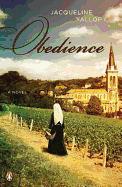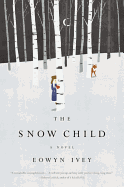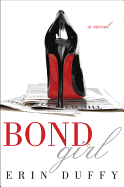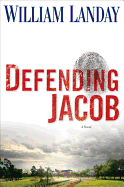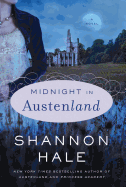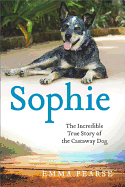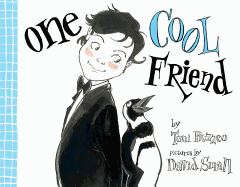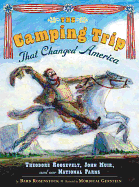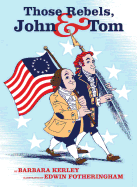 When I began writing Gillespie and I, my second novel, I knew that my greatest challenge would be to relate the story in a way that was subtle. In real life, one thing that fascinates me is subtext. People rarely say what they mean or mean what they say. That's why dialogue can sound false if characters express exactly what's on their minds or tell each other information that they already know.
When I began writing Gillespie and I, my second novel, I knew that my greatest challenge would be to relate the story in a way that was subtle. In real life, one thing that fascinates me is subtext. People rarely say what they mean or mean what they say. That's why dialogue can sound false if characters express exactly what's on their minds or tell each other information that they already know.
Usually, it's an author's job to spell things out. However, sometimes the writer has to hold back, to supply information in a way that makes us readers pause to reflect, to wonder about what we've been told or how it has been conveyed.
Whenever I teach creative writing, there's a bit of dialogue that I use to illustrate the notion of subtext. Imagine that Bob and Ted are old friends who haven't seen each other for a while. Ted is married to Tina.
Bob: How are you? How's things with you and Tina?
Ted: Oh, yeah, great, great, fantastic, yes, amazing. (Pause). Have you heard that Mike and Angela are getting a divorce?
A crude example, but it does the job. From what Ted says, it seems plain that, in fact, things aren't well with him and Tina. First, he seems to protest too much with his response: "great, great, fantastic," etc. Second, it's intriguing that being asked about his own relationship makes his thoughts turn, immediately, to a marriage that's in trouble.
In a less subtle exchange, Ted might have blurted out the truth: "Oh jeez, we're having such a terrible time; we might break up." To my mind, it's more interesting to make the reader work a little, in order to figure out what's really going on. Fiction is more rewarding when we have to read between the lines, when the writing is executed in shades of grey, rather than in black and white. --Jane Harris, author of Gillespie and I (Harper Perennial), reviewed below
Gillespie and I
by Jane Harris
For readers who think they've seen everything, Gillespie and I by Jane Harris (The Observations) is almost certain to be surprising. The novel's setting is Victorian-era Scotland, and its narrator, 35-year-old Harriet Baxter, is a nosy spinster with an interest in art--Scottish artist Ned Gillespie in particular. Harriet chronicles her friendship with the Gillespie family in a narrative that at first seems like the prim, tedious maunderings suited to a Victorian maiden aunt. By the end, however, Harriet's genteel prattling has constructed a nightmare that rivals anything by Stephen King.
Harriet's memoir alternates between the past and present, from the art world of 1880s Glasgow, to her current circumstances living in Bloomsbury in 1933. In Glasgow, Harriet recalls a critical time for the Gillespie household, when tragedy is poised to strike and destroy the lives of Ned, his wife and their children. Meanwhile, back in the present, Harriet realizes that the tragedy so many decades distant might be waiting to pounce on her--right in her own home.
Harriet's narrative voice is multilayered, the busybody old maid just a varnish on its surface. There are hints of Harriet's multiple dimensions, such as her avowed status as a "freethinker," her affinity for cigarettes and her envy of modern women who benefit from the freedom that was denied her in the 19th century. But few hints will prepare most readers for what is to come. Don't be fooled by this novel's stuffy exterior: it is psychological horror at its most unnerving. --Ilana Teitelbaum
Discover: A novel of the Victorian art world takes increasingly dark turns to its masterfully unsettling ending.
Obedience
by Jacqueline Yallop
Obedience, Jacqueline Yallop's American debut, carefully weaves two timelines together: today, a convent in a remote part of France is closing its doors, propelling its three remaining residents into the cold, vast, secular world. Sixty years ago, during the Second World War, young Sister Bernard accepts an invitation to meet a German soldier in an empty church and finds herself in the middle of a passionate love affair. When Sister Bernard stops hearing the voice of God, as she always has, she begins to question everything she has ever known, or thought she knew: her faith, her God and her obedience.
These two alternating storylines converge as Sister Bernard reenters the world outside the convent, where she is faced with the harsh fact that no amount of solitude or prayer has erased what she has done--or, perhaps more important, others' memory of it. Thus, Obedience quickly becomes a novel in which the past dominates, proving to be both historical fiction and a careful examination of the inescapable past, of how it influences the present and the future. Though these subjects prove large enough for many writers, Yallop does not stop there; Obedience forces readers to consider questions of judgment, and of blame and guilt, and of what it really means to act in the name of love. Yallop's simple prose carries both storylines through what could easily have become a cumbersome narrative, and her stark recounting of events proves the perfect balance to the emotionally wrought story of Sister Bernard. --Kerry McHugh, blogger at Entomology of a Bookworm
Discover: An author new to American readers with a thoughtful novel about the inescapable reach of the past.
Drifting House
by Krys Lee
Krys Lee was born in Seoul, South Korea (and lives there now), but raised in the United States and educated in England. Her global upbringing has clearly influenced her writing: she was a finalist for Best New American Voices in 2006, and her work has appeared in many literary magazines in both the U.S. and Korea. Her debut short story collection, Drifting House, includes two of those previously published works, as well as seven more original stories.
These powerful stories vary in setting and focus, but they all offer a glimpse into Korean culture and politics--often simultaneously revealing the effects of American influence, regardless of whether the characters remain in Korea or settle in the States. In the sparse and emotionally wrought story that gives the collection its title, siblings attempt to outrun famine in North Korea while being forced to make unbearable sacrifices. Before that, though, the first story, "A Temporary Marriage," effectively describes the new world created by two strangers from South Korea who come together after immigrating to California. In "The Salaryman," a middle-class, middle-aged man suffers the effects of downsizing during South Korea's financial crisis, with haunting consequences. Yet while these and other stories touch upon recent Korean history, they are timeless in their sway on the reader. Fans of Jhumpa Lahiri or Chang-rae Lee will want to add this debut to their reading list. --Roni K. Devlin, owner of Literary Life Bookstore & More
Discover: A powerful literary debut, with short stories set in the United States and Korea.
The Snow Child
by Eowyn Ivey
The Snow Child by debut novelist Eowyn Ivey (a bookseller in Alaska) is a fresh and exquisite adaptation of the snow maiden folk tale in which a child is brought to life from a figure made of snow. This version is set against the cinematic backdrop of 1920s Alaskan territory and follows Jack and Mabel as they build a homestead in the untamed wilderness. Mabel has a romantic vision of them working side by side to carve out their farm, but no longer in their prime and unprepared for the marked difference from the farm Jack grew up on, they are barely able to eke out an existence. They grow apart as Jack spends long days tilling the fields while Mabel stays cooped up in their cabin. Winter approaches, and they have no stockpile of food, presenting a real danger that they may not survive.
Nature in this tale is cruel and awe-inspiring; however, it also brings unexpected moments of joy. When the first snow of the season falls, it momentarily washes away Jack and Mabel's cares. They play together, throwing snowballs and building a lifelike little girl out of snow. The next morning the snow child has disappeared and in its stead is a skittish, feral girl named Faina who has a fox for a companion. When the neighbors hear tell of her, they chalk it up to cabin fever; Mabel is reminded of the folk tale; Jack has another theory altogether. Faina becomes like a daughter to the couple, albeit one who thrives in the same wilderness that is so at odds with them. She forever changes the lives of those she comes in contact with--almost like magic. --Melissa Solberg, sales director, Shelf Awareness
Discover: An exquisite tale of love and transformation set against the harshness and beauty of 1920s Alaska homesteading.
Bond Girl
by Erin Duffy
After working on Wall Street for 10 years, Erin Duffy appears to have written an exposé of the bond trading world masquerading as a work of fiction. Bond Girl is glamorous and deliciously hilarious; more important, Duffy offers both an insider's look and a female perspective on some of the lesser known elements of life on "The Street."
As a sales assistant at the fictional Manhattan firm of Cromwell Pierce, Alex (the titular bond girl) learns that chivalry is dead. Her sexist colleagues badger her relentlessly, commenting on her weight, sending her out for countless pizzas and attempting to peg her in the face with a football.
Alex and her motley crew of co-workers sell a few bonds over the course of the novel, but business takes a backseat to side-splitting pranks--like the bet compelling a co-worker to eat the entire contents of a vending machine. Scenes like these seem so unbelievable, you can't help but hope they're true.
Duffy weaves her narrative skillfully, offering a wickedly decadent glimpse into a male-dominated world of excess. A subplot in which Alex has to avoid the disturbing advances of a creepy bigwig client reminds us she's still a woman trying not to step on any Armani loafers in a masculine domain. But she ultimately earns their respect and friendship--and she does it in heels, no less. --Natalie Papailiou, author of blog MILF: Mother I'd Like to Friend
Discover: A hilarious story about what it means to a woman working the street--Wall Street, that is!
Mystery & Thriller
Defending Jacob
by William Landay
When assistant D.A. Andy Barber gets a case involving a murdered boy who's a classmate of his son, there are immediate gripes about conflict of interest. Then evidence points to Andy's son, Jacob, as the murderer, and the D.A. takes Andy off the case--now he finds himself on the other side of the law, trying to prove Jacob's innocence. But the more he investigates, the more he realizes there's a lot about his son he doesn't know, including whether Jacob is capable of murder.
Defending Jacob is a combination legal and psychological thriller, and William Landay keeps readers guessing about what happened to the murdered boy and the true nature of Jacob's psyche throughout. Andy believes his son cannot commit murder, going so far as to destroy potential evidence, but his wife, Laurie, questions whether she and Andy had been good parents, and if Jacob had needed help that they never provided. These may be realistic reactions, but they make Laurie somewhat hard to like, as if she's being disloyal to her son by assuming the worst so quickly.
Landay's overall style could use some editing--he repeatedly mentions Laurie's weight loss during the ordeal, for example, and takes half a page to describe idyllic beach scenes on a resort's website--but the story in Defending Jacob effectively dramatizes questions about how well we know those we love, and how far we would go to protect them, even from themselves. --Elyse Dinh-McCrilllis, freelance writer/editor, blogging at Pop Culture Nerd
Discover: What is a parent's responsibility when his child is suspected of a heinous act?
Romance
Midnight in Austenland
by Shannon Hale
In Midnight in Austenland, Shannon Hale returns to the world of Austenland with a wonderful new heroine. Nice, kind, clever Charlotte Kinder is still reeling from the dissolution of her marriage and turns to Jane Austen for comfort. When her kids visit their father, she decides to take a summer vacation to England and hits upon Austenland--a resort where one goes to wear corsets and empire gowns, flirt modestly with gentlemen, stroll about the gardens and live like Elizabeth Bennet for two weeks.
Now known as Mrs. Charlotte Cordial (dashing widow), Charlotte is soon lost in the Regency world. Maids wait upon her, her "brother" Eddie is a great chum, and the brooding Mr. Mallery sets her pulses fluttering. Then, one night, Charlotte is convinced she stumbled upon a dead body in a secret room. No one else believes her, and the next morning there's no sign of a body. Charlotte is torn: Did she imagine the whole thing? Or did she really touch a dead body? If so, who was it, and who is the murderer?
Like Catherine in Northanger Abbey, Charlotte begins her own research. Hale makes Charlotte's mix of naiveté and cleverness completely believable as she fumbles her way through an investigation of sorts, and the reader can't help but root for the likable and funny Charlotte to solve the mystery and find her own true love. --Jessica Howard, blogger at Quirky Bookworm
Discover: Austenland was supposed to be the vacation of a lifetime, but is it hiding a murderer?
Biography & Memoir
All There Is: Love Stories from StoryCorps
by Dave Isay, editor
"Love is all there is," said StoryCorps facilitator Lillie Love, to whom this book is dedicated, and the stories in Dave Isay's collection, pulled from interviews recorded for the oral history project, bear witness to her statement. The brief narratives in All There Is attest to love's endurance and its ability to transcend age, culture, distance and circumstance.
Grouped into three sections, these dialogues (and a few monologues) tell of love found, love lost and love found unexpectedly. Some interviewees talk with their spouses; others reminisce with children, friends or relatives about the great love (or loves) of their lives. There is tenderness here, but no sentimentality; most of these stories contain pain as well as joy, the "love lost" section, for example, includes stories of illness, accidents and spouses who died in the towers on 9/11. More hopefully, each story demonstrates love's tenacity in the face of difficulties such as death, divorce, separation or age; most also have some amusing or unexpected element to them. A chance meeting at a New York City tollbooth, falling in love while deployed in Iraq, reconnecting with a lost love after decades apart: the love in these pages delights in the element of surprise.
For anyone who rejects neat and tidy love stories, but believes in the power of love to shape people's lives, All There Is is a warm, honest and courageous reaffirmation. --Katie Noah Gibson, blogger at Cakes, Tea and Dreams
Discover: A wise, touching collection of personal histories attesting to love's great power.
Science
Extreme Weather
by Bonnie Schneider
In 2010, there were 373 natural disasters that killed more than 295,000 people--the deadliest year for natural disasters in at least two decades. If such numbers seem frightening, you can find some solace in CNN/Headline News meteorologist Bonnie Schneider's Extreme Weather. After fielding questions via social media platforms about the science behind extreme conditions and how to survive in worrisome weather, Schneider decided to write a well-researched, easy-to-understand guide to help keep people and pets safe in weather emergencies.
She addresses all of the natural disasters listed in the book's subtitle, A Guide to Surviving Flash Floods, Tornadoes, Hurricanes, Heat Waves, Snowstorms, Tsunamis and Other Natural Disasters, plus a few more, explaining them in detail, often offering firsthand testimonials. She has recommendations for handling disaster preparation, home and property protection, emergency evacuation and pet safety. She also explains how to use social media in natural disasters, how to develop a personal disaster plan and how to acquire emergency supplies for people and pets.
The appealing format of Extreme Weather includes bullet-pointed lists, testimonials offset in italics and the most important information in bold. Whether you're intrigued enough by extreme weather conditions to read the book from start to finish or choose to study the chapters that involve natural disasters that are more likely to occur close to home, Schneider's handbook has the potential to save lives. --Roni K. Devlin, owner of Literary Life Bookstore & More
Discover: A well-researched guide to the science behind extreme weather conditions and how to get through them.
Pets
Sophie: The Incredible True Story of the Castaway Dog
by Emma Pearse
The star of Sophie is an Australian cattle dog, often referred to as a "Blue Heeler," who was adopted as a puppy into the Griffith family in 2005. When her primary caregiver, Bridgette, left for university a year later, Sophie's calm demeanor and unflagging affection helped her parents adjust to their new "empty nest" as she became enmeshed in their lives and daily activities, including their love of sailing.
During one voyage, Sophie fell overboard five miles from land and, after many frantic hours spent searching for her, the Griffiths assumed she drowned. Little could they have imagined that Sophie would be able to swim to an island and, upon realizing the island held little sustenance, swim through a treacherous waterway to a second island and manage to survive for five months before she was captured by a ranger and reunited with her family.
Emma Pearse reports on the Griffiths' experiences and the sightings of Sophie on the islands, turning the story into both a hero's journey and a testament to the bond between humans and their beloved dogs. She has created a compelling tale of hope that any dog lovers, whether they have suffered the heart-wrenching disappearance of a pet or not, will appreciate. --Kristen Galles from Book Club Classics
Discover: One dog's remarkable story of perseverance and love.
Children's & Young Adult
One Cool Friend
by Toni Buzzeo, illus. by David Small
Toni Buzzeo and David Small take the idea of a person resembling his pet to hilarious extremes.
Elliot, a "very proper young man" dressed in a black tux and bow tie, reads to a menagerie of stuffed animals. His jovial red-headed father, sporting a green checked suit, pops up from behind a newspaper to say, "Family Fun Day at the aquarium. Shall we go?" The boy thinly disguises his look of disgust. A clever design element sets off Elliot's ponderings in a classic comic thought balloon ("Kids, masses of noisy kids"), while his actual spoken words appear in a dialogue bubble, "Of course. Thank you for inviting me."
David Small's (Stitches) artwork rewards close scrutiny. While Elliot's father reads a magazine on a bench, his head jutting out from his round torso, he resembles a creature more than a human. Elliot's shadow on the aquarium walls hints at what he'll find farther down the hall. With his father's approval, Elliot takes home a penguin and attempts to make the fellow, whom he names Magellan, feel at home. A standout scene pictures Elliot and Magellan ice skating on a makeshift rink, while his stuffed menagerie, sporting wool hats, act as spectators.
Buzzeo (Lighthouse Christmas) portrays Elliot's father as a caring, absent-minded professor type who gives his son a lot of leeway. Elliot proves that he has earned it. The ending twist will send youngsters back to the beginning looking for clues, and they'll be satisfied again and again.—Jennifer M. Brown, children's editor, Shelf Awareness
Discover: A picture book that takes the idea of an owner resembling his pet to hilarious extremes.
The Camping Trip that Changed America
by Barb Rosenstock, illus. by Mordecai Gerstein
Perhaps it took a trip to the Grand Canyon with your family to learn that we have President Theodore Roosevelt to thank for the preservation of that world wonder. But did you know that naturalist John Muir also played a part?
When he was sworn in as the 26th president after the assassination of President McKinley, Theodore Roosevelt, 42, was the youngest to hold the office. This exuberant picture book suggests that Roosevelt, a huge fan of the outdoors, was inspired by naturalist John Muir's books and his cry for help to save the wilderness. Roosevelt asked Muir if he would guide the president through California's Yosemite wilderness. In a glorious vertical two-page illustration, Caldecott Medalist Mordecai Gerstein (The Man Who Walked Between the Towers) shows the majesty of the giant sequoias in the Mariposa Grove, towering over the two men on horseback, while a two-page horizontal spread lays out the stunning vistas from Glacier Point. No wonder the nature-lover in the young president was called to action.
Barb Rosenstock (Fearless: The Story of Racing Legend Louise Smith) demonstrates how one person's passion and commitment can be contagious to those with the power to effect lasting change. A detailed author's note lists the magnitude of what Roosevelt marked as land to be preserved and protected by the U.S. government, and says that the two men remained lifelong pen pals. --Jennifer M. Brown, children's editor, Shelf Awareness
Discover: A friendship between Theodore Roosevelt and John Muir that began with a camping trip and ended with our national parks system.
Those Rebels, John and Tom
by Barbara Kerley, illus. by Edwin Fotheringham
It's hard for many of us to believe that there was ever productive debate in politics, but that's just what Barbara Kerley and Edwin Fotheringham (the creators of The Extraordinary Mark Twain (According to Susy) prove with their portrait of the friendship between two of our Founding Fathers.
Everything about John Adams and Thomas Jefferson was different. From the opening page, against a backdrop of the 13 stars and stripes of the original colonies' flag, John ("short and stout") and Tom ("tall and lean") stand in stark contrast, back to back. Artist Edwin Fotheringham cleverly contrasts the differences in their backgrounds with John crawling away from his bed in a chest of drawers while Tom sleeps in an ornate cradle beneath a chandelier. But they come together for the Continental Congress and unite against tyrannical and taxing King George of England. Author Barbara Kerley demonstrates that their joint leadership benefited from their respectful disagreements and also, in an author's note, lays out the issues that would continue to divide the two men, including slavery and the balance of power between the federal government and the states.
Children will be reeled in by the friendship at the center of this picture book and close the cover with an understanding of how John and Tom's alliance--and their disagreements--helped create our nation as we know it today. --Jennifer M. Brown, children's editor, Shelf Awareness
Discover: How an unlikely friendship between two smart, stubborn and polar opposite men helped shape the United States of America.
| Advertisement Meet belle bear! |


